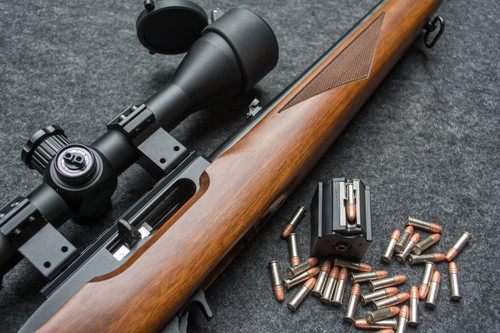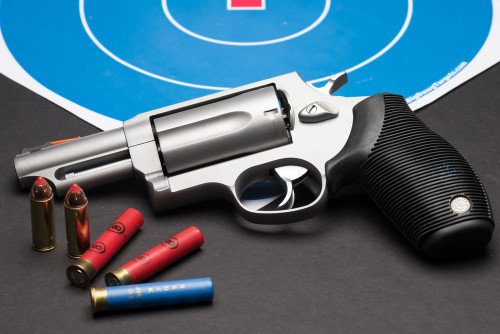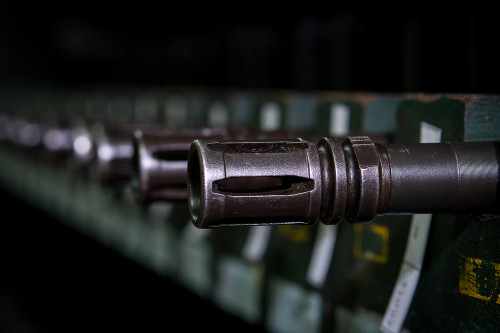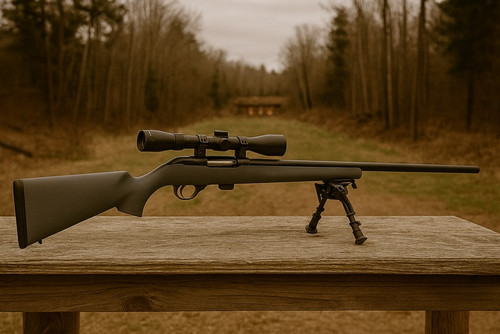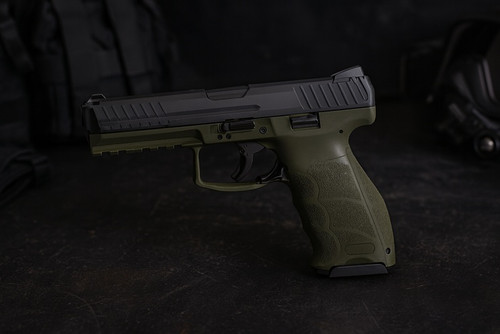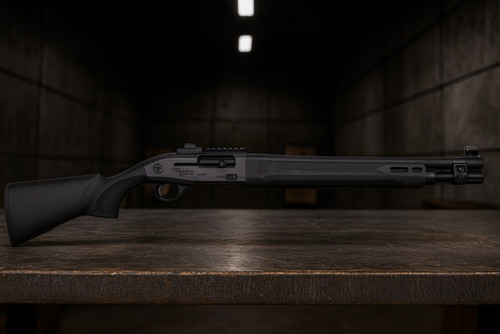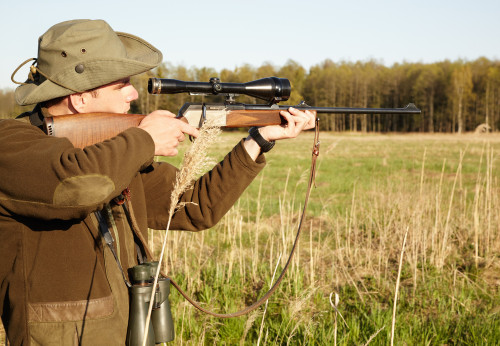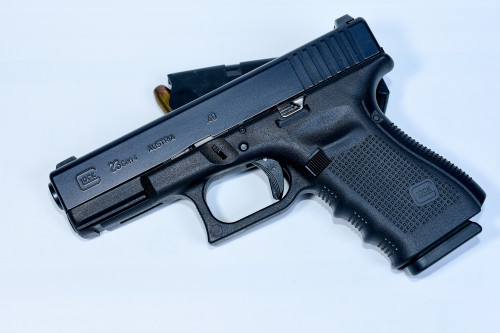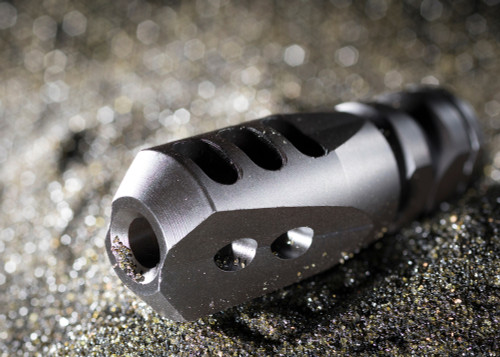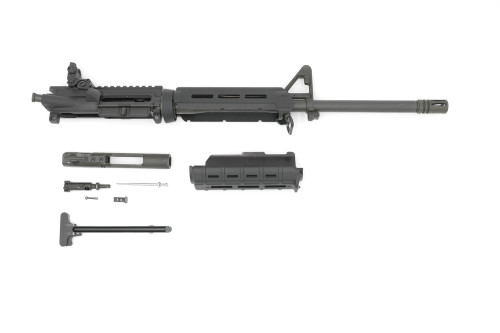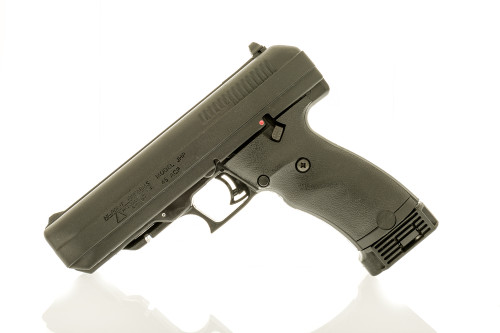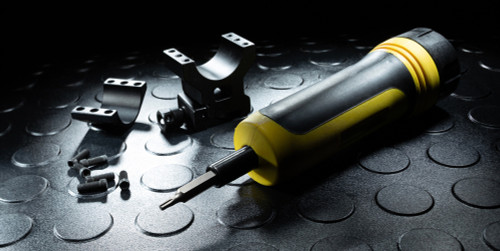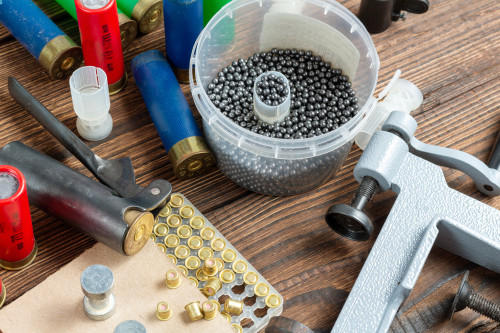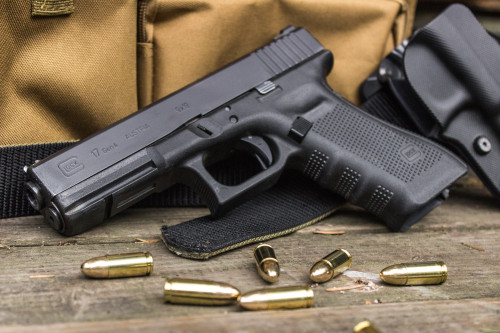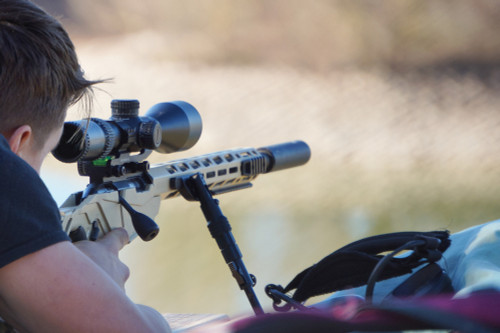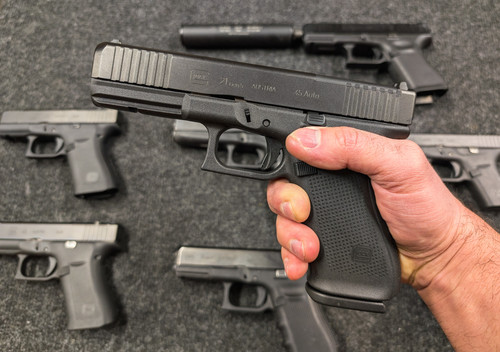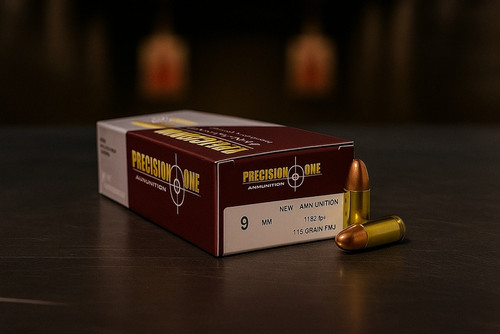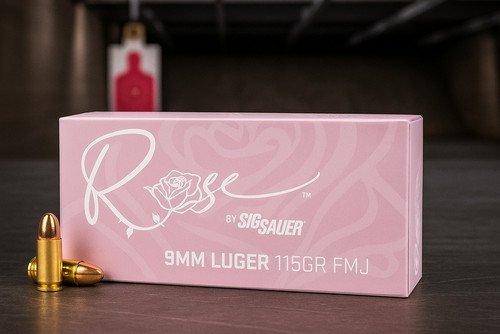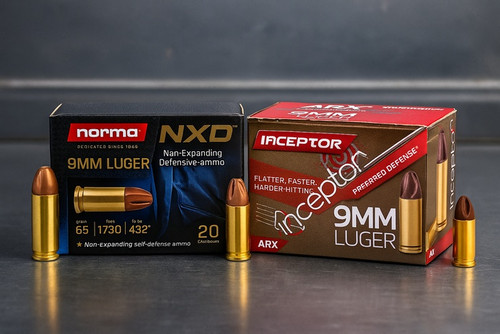Quick Answer
The Glock 18/18C are select-fire, full-auto 9mm pistols with a cyclic rate of approximately 1,200 RPM. Civilian ownership is essentially impossible due to U.S. NFA/GCA/FOPA restrictions. Access is limited to SOT dealers, manufacturers, military, and law enforcement (often via demo letters). "Alternatives" include dealer-only converted G17s. The 18C's ports help tame muzzle climb during full-auto fire.
Key Takeaways
- Select-fire 9mm pistol; fires at ~1,200 rounds per minute
- 18C uses slide cuts and barrel ports to reduce muzzle rise
- Civilian ownership: practically unattainable
- Access: Qualified manufacturers/importers, SOT dealers with LE demo letters (post-sample), and military/law-enforcement agencies.
- Converted G17s exist for post-sample demos
- Control improves with ports and proper stance
The Glock 18 represents the rare intersection of pistol design and machine gun fire rates. Its selector switch transforms an ordinary-looking 9mm into a 1,200 RPM automatic weapon. The 18C model adds compensator ports that help tame the natural muzzle climb. It makes this specialized tool both feared and coveted by firearms fans who will likely never own one.
Meet the Glock 18 Family
Core Concept—Select-Fire, Full-Auto 9mm
At first glance, the Glock 18 looks like a standard G17. The lines match. The size feels the same in the hand. But look closely at the left rear of the slide. You will see a small selector switch. That tiny lever changes the mode. It turns this plain-looking pistol into a fully automatic firearm. This switch lets you choose between normal semi-automatic fire (one shot per trigger pull) or full-auto mayhem where rounds pour out approximately 1,200 rounds per minute (about 20 rounds per second).
Originally produced in 1986, developed at the request of Austria’s EKO Cobra counter-terror unit. The select-fire capability makes it unique in the Glock lineup. With the selector switch in the down position, the pistol fires in full-auto mode. Flip it up, and you're back to semi-auto operation. This dual personality gives tactical teams options depending on the situation.
The G18 accepts standard G17 17-round magazines and extended 19-, 24-, and 31/33-round Glock magazines; specific agency ship-with contents vary. . It also takes other 9mm Glock magazines. The extended 33-round “happy stick” makes far more sense here. A full-auto burst can empty a standard mag in under a second. The official numbers tell the weight story as well. Weights are comparable to a G17: ~625 g (unloaded, no mag) and roughly ~905–945 g loaded with a 17-round magazine (varies by generation/measurement). Glock does not publish a U.S. commercial spec page for the G18.
The 18C—Compensated Variant
The 18C keeps the same select-fire base. Then it adds key parts that help you manage the gun. The “C” means compensated. You get cutouts in the slide and matching ports in the barrel. These are not for style. They vent hot gas upward when you fire. The upward jet pushes the muzzle down. That push fights the climb that comes with fast strings.
On the 18C, the compensator cuts start about halfway back on the top of the barrel. The two rear cuts are narrower than the front pair. The slide is hollowed in a rectangular window between the rear of the ejection port and the rear sight. All of these channels gas up and away. That upward force helps a trained user keep control in full-auto fire.
| Aspect | Glock 18 | Glock 18C |
|---|---|---|
| Fire mode | Select-fire: semi-auto or full-auto (selector switch) | Select-fire: semi-auto or full-auto (same base) |
| Cyclic rate | ≈1,200 RPM (≈20 rounds/sec) | ≈1,200 RPM (≈20 rounds/sec) |
| Compensation / ports | No compensator ports noted on slide/barrel | Slide cuts + barrel ports vent gas upward to push the muzzle down |
| Muzzle rise control | Full-auto induces strong first-burst climb without ports | Ports help reduce muzzle rise during rapid/full-auto fire |
| Slide / barrel details | Standard slide and barrel (no porting noted) | Cuts start ~halfway along top; two rear cuts narrower than front pair; rectangular window between rear of ejection port and rear sight |
| Origin / role context | Born in 1986 at the request of Austrian unit EKO Cobra; shares G17 frame size | Same select-fire platform with added compensation features for controllability |
Inside the Selector
Trigger Bar & Sear Interaction
The magic of the G18's full-auto capability comes from a surprisingly simple mechanical setup. The slide-mounted selector interfaces with the firing mechanism to enable semi-auto or continuous fire; detailed internal descriptions vary by official technical source and are not publicly documented by Glock.
This extra tab interacts with the selector switch mechanism to create the full-auto effect. When activated, it keeps the sear engaged after the first shot. It allows for continuous fire as long as the trigger remains pressed.
Selector Lever Function
The selector switch on the rear left side of the slide is the gateway to full-auto fun. When switched to the full-auto position, it moves a piece of metal downward to contact the extra tab on the trigger bar.
This contact means that after the first shot, the sear stays engaged. It lets the slide cycle repeatedly without requiring additional trigger pulls. The result? A continuous string of fire until you release the trigger or run out of ammunition—which happens quickly at 1,200 rounds per minute.
Can You Buy a Glock 18?

Why Civilians (Basically) Can't
Bad news for collectors in the United States. A civilian almost never gets a legal Glock 18. Three federal laws built the wall: the National Firearms Act of 1934 (NFA), the Gun Control Act of 1968 (GCA), and the Firearms Owners Protection Act of 1986 (FOPA).
FOPA includes the Hughes Amendment. That line banned civilian ownership of newly made machine guns after May 19, 1986. So the path is shut for modern Glock 18s. Since the Glock 18 entered production right around this time, virtually none made it into civilian hands before the cutoff date.
Because of 18 U.S.C. § 922(o), civilian-transferable G18s are essentially nonexistent; post-1986 examples are restricted to qualified entities (e.g., with LE demo letters).
Three Legal Buckets (Machine Guns)
Technically, there are three categories of machine guns under U.S. law:
Transferables: These are machine guns registered before May 19, 1986. Civilians can own these, but for the Glock 18, there are virtually none in this category. If any exist at all, they would cost as much as a luxury car.
Pre-Samples: These were imported between January 1, 1986, and May 19, 1986. Only dealers could have them, but they could keep them after giving up their licenses. Again, the Glock 18 was just starting production during this time, so these are extremely rare if they exist at all.
Post-Samples: These are machine guns made after May 19, 1986. They're only available to Class III dealers with demo letters, manufacturers, military, and law enforcement agencies.
Dealer Access & Demo Letters
For Class III dealers, there is a narrow path to obtaining a Glock 18. They need a "demo letter"—an official request from a police department asking the dealer to acquire the gun for testing and demonstration purposes.
Post-1986 dealer samples generally cannot be retained if a dealer gives up their SOT/FFL; they must be transferred (subject to law) or destroyed.
Price & Availability Snapshot
Cost Reality
Here is a twist that surprises many people. For buyers who can purchase a Glock 18 legally—agencies and certain dealers with proper paperwork—the price is not wild. In some cases, a Glock 18 for law enforcement can cost less than a standard Glock 17.
This gap exists because the rule is about legal status, not build cost. The pistol is not expensive to make compared to other Glock models. The limit lives in the law.
Scarcity Drivers
Agency pricing does not flood the market. Glock 18s stay scarce. Strict compliance rules, narrow eligibility, and almost no civilian inventory keep numbers low. Even for eligible buyers, this is not a click-to-cart gun. You face paperwork, checks, and strict steps at every stage. Those steps form real barriers.
Glock's official position reinforces this scarcity: "The G18 pistol is a select-fire fully automatic pistol. GLOCK Ges.m.b.H. and GLOCK Inc. do not sell G18 pistols to the U.S. commercial market due to legal regulations applicable to fully automatic firearms."
Alternatives
Converted Glock 17 (Dealer-Only, Post-Sample)
For Class III dealers with proper paperwork, a more accessible option is a converted Glock 17. These use a special selector switch installed on the backplate to enable full-auto fire.
Converted G17s occasionally appear on sites like GunBroker. Pricing for post-sample dealer guns is not meaningful for consumers and varies by source; transfers are limited to qualified entities with appropriate documentation. (Remove the dollar figure.)
Civilian-Legal Note
Do not try to convert a semi-auto Glock to full-auto. That act is illegal for civilians. There are no shortcuts and no hidden routes. Machine gun rules leave no loophole here.
The only technically legal path for civilians involves transferable machine guns registered before May 1986—and for the Glock 18, this category is essentially empty.
How It Shoots
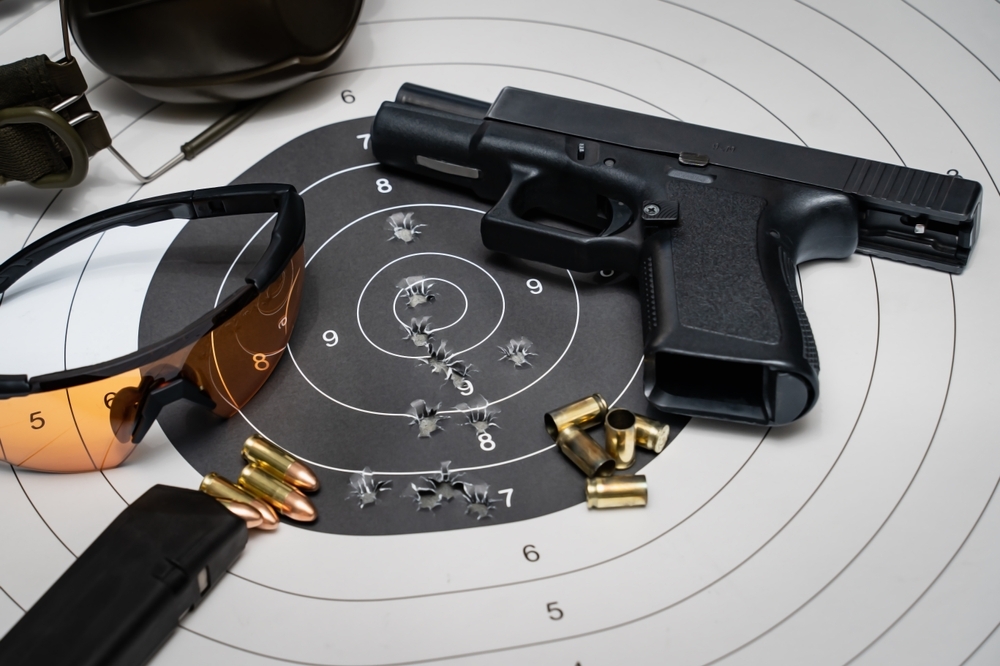
First-Burst Climb vs Managed Strings
Without proper technique, the first burst from a Glock 18 tends to climb dramatically. The cyclic rate of 1,200 rounds per minute means the second shot is happening before you've even processed the recoil from the first.
On full-auto, the muzzle wants to rise hard in the first burst. The 18C’s ports help slow that climb. Add a solid stance for more control. Lean forward a bit. Extend your arms. Keep the elbows firm. With this form and the ports, trained hands can keep hits on target more often. It is still a handful. The split between wild spray and steady bursts comes from stance, grip, and the compensator working together.
Drum Mags, Heat, and Control
Extended magazines—and even 50- or 100-round drums—exist for Glock-pattern pistols, though heat and controllability become limiting factors in extended bursts.. Heat builds fast with long bursts. Recoil pulses stack in a rush. Parts get hot. Accuracy drops as the gun starts to jump.
Experienced users switch to short, controlled bursts. They fire a quick string. Then they reset and breathe. This keeps groups tighter and slows heat soak. It also helps parts last longer over a long training day.
Usable Accuracy in Full-Auto
With proper technique, the Glock 18 can deliver usable accuracy. What starts as wild spraying can be refined to keep rounds within the size of a car at close range. It takes practice, but the gun is capable of more precision than most people expect from a full-auto pistol.
Who Can Actually Buy One?
Eligible Entities
The list of who can legally purchase a Glock 18 is short:
- Military units
- Law enforcement agencies
- Firearms manufacturers
- SOT/Class III dealers with proper documentation (demo letters)
Glock markets the G18/18C to government users; reputable references note it is available to law-enforcement/military, not the U.S. commercial market.
Non-Eligible (Most Civilians)
Due to the 1986 production cutoff and extreme rarity of pre-ban models, there is virtually no practical path for civilian ownership. This isn't just a matter of money or paperwork—the guns simply aren't available in the civilian-legal transferable category.
Safety, Compliance & Ethics
Do Not Attempt DIY Conversions
This needs to be clear again. Converting a semi-auto Glock to full-auto is a federal felony. The ATF treats these cases with full force. Penalties include large fines and long prison terms. The risk is not worth it.
Ignore any video or post that claims a legal home method. There is no legal DIY path to a full-auto Glock.
Train Within the Law
If you want time on an automatic weapon, there is a safe route. Some ranges rent full-auto guns under staff control. You can learn, shoot, and get the feel of bursts. You also stay on the right side of the law. That is the smart way to satisfy your curiosity.
Conclusion
The Glock 18 is rare and out of reach for most Americans. Its select-fire mode and blazing rate of fire make it a special tool for certain military and police roles. For most private gun owners, it stays a legend you read about and watch on video.
The 18C shows a simple, practical answer to rise and climb. Ports and smart setup make a fierce pistol easier to run. Those who handle one legally—through correct channels and proper training—get a glimpse of a very unusual handgun.
For everyone else, the Glock 18 remains what it has long been. It is a special-purpose tool for special-purpose users, and a clear sign of the complex legal net around automatic weapons in the United States.
Further reading: if you want model-by-model carry guidance and hands-on notes, check our full best Glock for concealed carry guide.
Frequently Asked Questions (FAQs)
Is the Glock 18 legal for civilians in the U.S.?
For all practical purposes, no. Unless you find one of the nearly non-existent pre-1986 transferable models, civilians cannot legally own a Glock 18.
What's the difference between the Glock 18 and 18C?
The 18C has compensator cuts in the slide and barrel that vent gas upward to reduce muzzle rise during rapid fire. The standard 18 lacks these features.
How fast does the Glock 18 cycle (RPM)?
Approximately 1,200 rounds per minute, though Glock's website lists it as “approximately 20 rounds per second” (1,200 RPM).
What is a "demo letter," and who needs it?
A demo letter is an official request from a law enforcement agency asking a dealer to acquire a firearm for demonstration. Class III dealers need these letters to obtain post-1986 machine guns like the Glock 18.
Can I convert my Glock 17 to full-auto?
No. Converting a semi-automatic firearm to full-auto is illegal for civilians under federal law.
Why are transferables so rare and expensive?
The 1986 FOPA banned the registration of new machine guns for civilians. It creates a fixed supply that grows smaller every year. For Glock 18s, almost none were registered before the cutoff.
Do ports on the 18C really help control?
Yes. The compensator ports direct gas upward. It creates a downward pressure that helps counteract muzzle rise during rapid fire.
About the Author
This article was written by the Pro Armory writing team based on current research, including studies from reputable sources like the Journal of Military Science, Firearms News, and the National Shooting Sports Foundation. We also used trusted information from official defense publications and respected firearm authorities such as the ATF, NRA, and manufacturer manuals.
Disclaimer: The information in this article is for education only and is not legal advice. Laws on firearms vary by state and city and they change over time, so always check current rules and follow them. Because of current controversy and enforcement focus around Glock pistols and so-called “Glock switches,” also called auto sears, and reports that Glock has discontinued certain older models and launched a “V” series meant to resist such changes, this article is offered only for informational and historical context. We do not describe, instruct, encourage, or approve any change that turns a firearm into a fully automatic weapon. Devices that do this are federally regulated and illegal to have or use without proper authorization. Any mentions of common slang—like “fun switch” or “happy sticks,” meaning extended magazines—are for description only, not support or praise. Always confirm the latest federal, state, and local law, and speak with a qualified attorney or the ATF before you take any step.



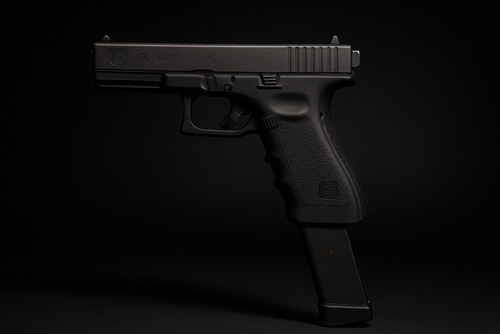
 Pro Armory Editorial Team
Pro Armory Editorial Team







